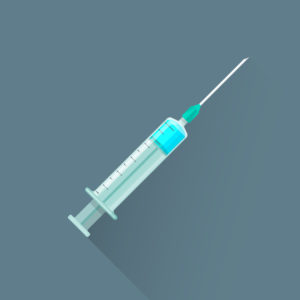 The field of regenerative medicine has been booming over the last several years. It includes the use of injections of stem cells and the use of platelet rich plasma (PRP) to hopefully cure many muscle, joint, ligament and tendon issues in the body. However, it is a fairly unregulated medical field. Most procedures have little scientific data to support their efficacy and therefore are rarely paid for by insurance. There is a lot of case report-type success but very little truly scientific studies to prove the success of these procedures. Many physicians recommend these procedures, knowing the research results would probably change many people’s mind.
The field of regenerative medicine has been booming over the last several years. It includes the use of injections of stem cells and the use of platelet rich plasma (PRP) to hopefully cure many muscle, joint, ligament and tendon issues in the body. However, it is a fairly unregulated medical field. Most procedures have little scientific data to support their efficacy and therefore are rarely paid for by insurance. There is a lot of case report-type success but very little truly scientific studies to prove the success of these procedures. Many physicians recommend these procedures, knowing the research results would probably change many people’s mind.
Recently, research on PRP was presented at the American Academy of Orthopedic Surgeons by Dr. Herman Johal, MD. He performed a comprehensive review of the literature, especially of studies that were well designed control trials. The findings were surprising for the supporters of these procedures, and somewhat predictable. The procedures may be helpful for conditions like tennis elbow, lateral epicondylitis and knee pain. However, for tennis elbow it was no better than dry needling of the elbow tendons and it was significantly more expensive. For knee osteoarthritis, it did work, but again it was no better than hyaluronic acid treatments that are well researched, and are scientifically proven effective and covered by insurance.
PRP and Its Effectiveness
The use of PRP in all other areas of the body including the spines discs, muscles and other joints, especially the shoulders, was not effective. Traditional treatments such as physical therapy and exercise, anti-inflammatory medications as well as steroid injections were more successful. These new techniques pushed by many legitimate physicians are just not helpful. This is a stark reminder that placebos, otherwise known as sugar pills or sham treatments, will work in about 30 percent of people no matter what.
The message for many pain patients is that there often is a reason for a procedure not to be covered by insurance. If Medicare has approved a procedure and it has an approved specific billing code, then the procedure has scientific studies demonstrating its safety and effectiveness. Currently, the use of platelet rich plasma does not have the designation and it appears to be due to a lack of proven effectiveness. Unless one is independently wealthy, caution should be noted when a procedure is done strictly on a cash basis in our society, like PRP often is.
 Recently, platelet rich plasma (PRP) has been making news as a treatment for hip bursitis after a presentation at the American Academy of Orthopedic Surgery annual meeting. PRP is
Recently, platelet rich plasma (PRP) has been making news as a treatment for hip bursitis after a presentation at the American Academy of Orthopedic Surgery annual meeting. PRP is